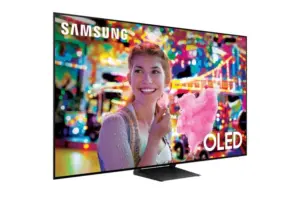I wish I had written about this myself but the writers at Ars Technica are better than me (at least according to their pay, I hear, but who’s complaining. Hint:me) According to the writer, Samsung is offering both traditional WOLED (white OLED) and QD-OLED (quantum dot OLED) TVs. However, the company’s decision to blur the lines between these two distinct technologies in its 2024 lineup is a disservice to consumers and a step backward for the industry, according to the author, Scharon Harding. The article looks like it is a couple of weeks old but it just popped up on my radar, and I am so very glad it did. It spoke to me, as they say.
In recent years, Samsung has touted the advantages of its QD-OLED technology, which promised richer colors and improved performance compared to LG Display’s WOLED panels. We also know that both Samsung and LG have had to deal with significant losses in their display businesses, undercut by Chinese competitors on traditional technologies, and heavily vested in expensive technology for OLED, which is still a premium product and out of reach for most consumers.
The gist of Harding’s argument is that the differences between WOLED and QD-OLED panels, such as color purity and full-screen luminance, can be deciding factors for discerning buyers, especially when investing in a high-end TV. By obfuscating this information, Samsung is making it harder for consumers to make informed decisions.
As the TV industry continues to evolve, transparency and consumer education should be prioritized. Samsung’s decision to muddy the waters between WOLED and QD-OLED not only confuses customers but also diminishes the technical debates and innovations that have made the OLED market exciting in recent years. It is essential for manufacturers to provide clear information about their products, allowing consumers to make informed choices based on their preferences and needs.
I really wish I had written that piece myself. Not sure that I would say Samsung really cares because at this stage, according to my boss, the OLED TV strategy of Samsung and LG isn’t going to pan out because people are not in the mood for quality TV watching. Something like that. All I know is that I have to pay over a thousand dollars for my phone, over two thousand dollars for my laptop, and those are the screens I have to use the most. I love my TV, but I am not going into more debt to get one. I can do just fine watching YouTube on a budget 55-inch I bought on Amazon.

